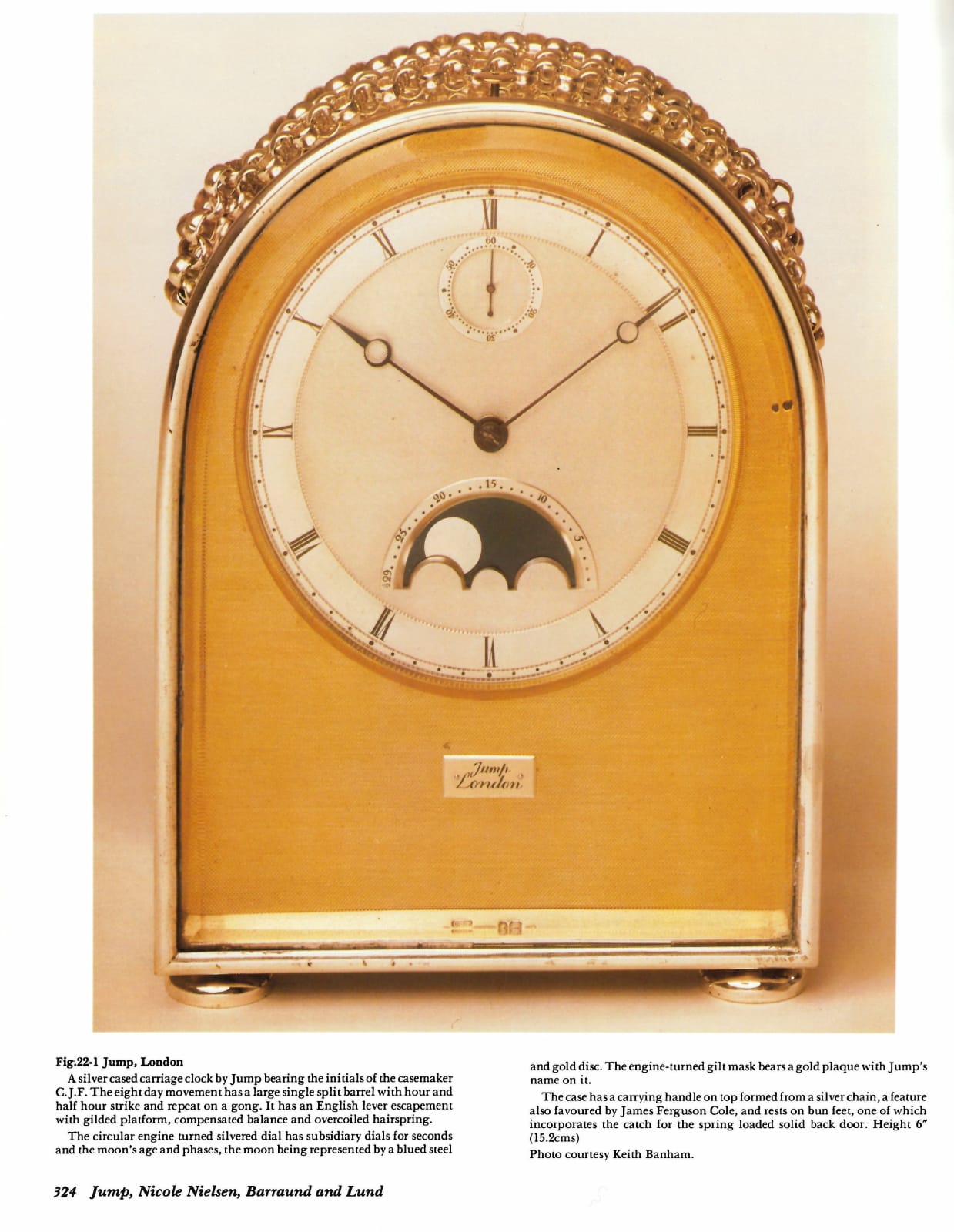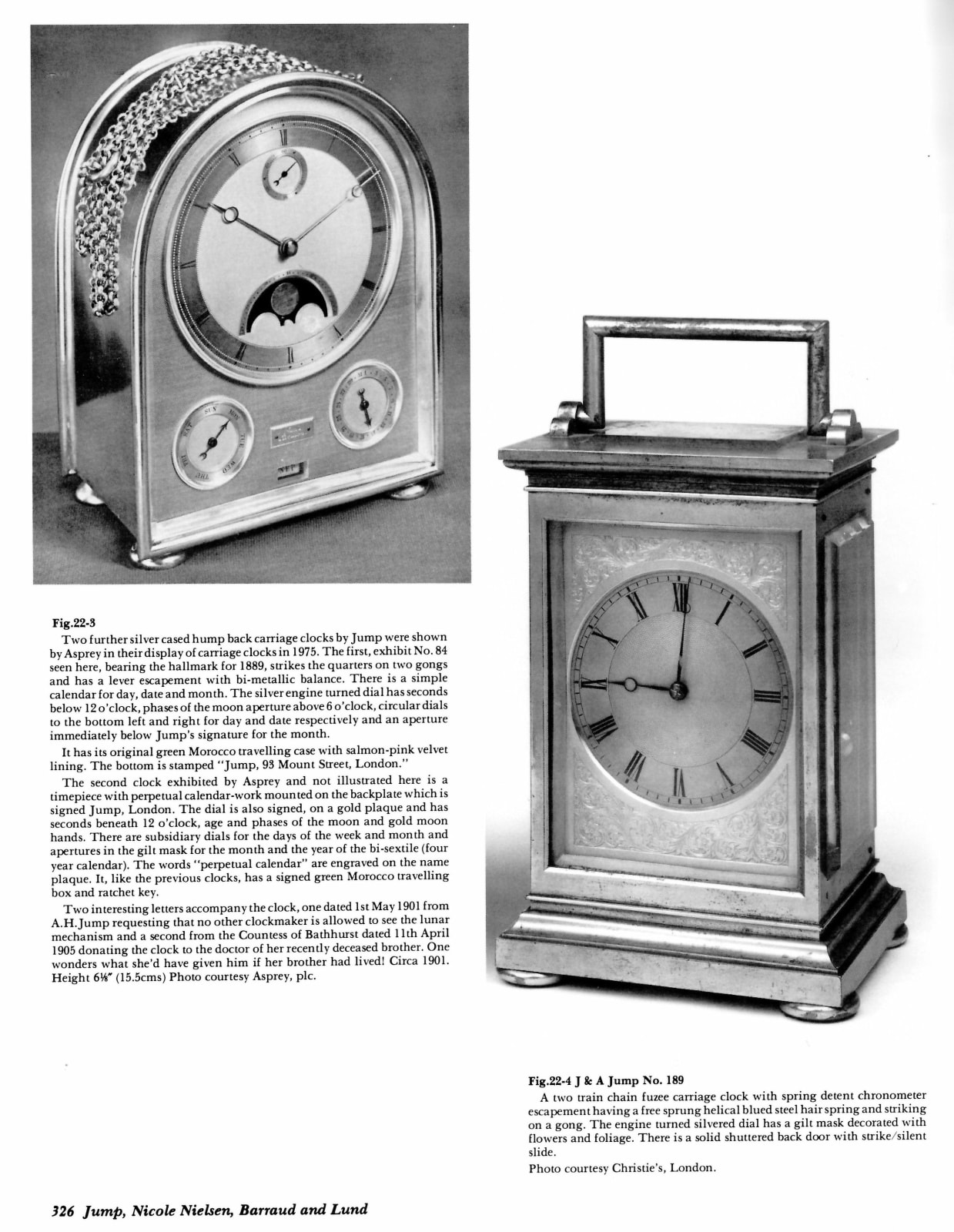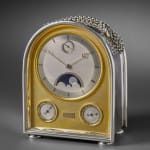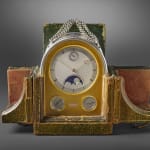Joseph and Henry Jump
A late 19th century humpback travelling clock with moonphase by Jump, circa 1892
Silver, and leather case
Height 15.5cms
Sold
Further images
Provenance
A private European collection.
Literature
Derek Roberts, "Carriage and other travelling clocks", 1993, p. 324 and 326.
G. Daniels, 1975 "The Art of Breguet".
Later examples are illustrated in R. Good, 1996 "Victorian clocks", item 12 hallmarked 1889.
Allix and Bonnert 1974/1981 "Carriage Clocks", plate IX/76 hallmarked 1901.
A very fine and exceptionally rare late 19th century silver humpback travelling clock by Joseph and Henry Jump,
with moonphase, running seconds and annual calendar. In the original gilt-tooled green leather travelling/presentation case and with original silver double-ended safety key.
London, date circa 1892
Height 15.5 cm
The hump-backed case with plain moulded edges and raised on button feet, set to the top with a chain handle, the gilt arched dialplate decorated all over with engine turning and set with three silver dials, the largest with gold moon hands reading against a dotted outer minute track and elegant Roman numerals, the chapter ring with engraved borders and a very finely engine turned centre set with a recessed subsidiary seconds dial below XII with blued steel hand and a recessed moonphase aperture spanning between VII and V with outer Arabic scale giving the age of the moon as it traverses the blued and silver starry night sky, all set within a milled bezel over two subsidiary dials with matching bezels, the left hand side engraved with days of the week (in English), and the right hand side with date of the month in alternate Arabic numerals 1-31, both subsidiaries with counterpoised blued steel arrow hands, the whole arched dial framed by a silver angled sight ring, the movement wound and set through a pair of pivotted shutters in the otherwise solid rear door, the door opened via a hidden pin set into the underside of the rear right hand side foot, the backplate signed and with setting arbors for the hands, day and date, the movement with arched plates united by four turned pillars, the contrate wheel set in a jewelled endstop with triple-screwed chaton, with calendar setting arbors below, maintaining power to the single chain fusee and with all wheels of five crossings, the train terminating in a large gilt platform with jewelled arbors in double screwed chatons, the cut and compensated bimetallic balance to an overcoiled blued steel spring and English type lever escapement.
The whole contained in the original green leather and tooled gilt travelling/presentation case. The case surmounted by a gilt loop handle and clasp set between the top two halves, edged by gilt borders and running Greek key patterns, the corners with anthemion motifs, the protective front panel sliding upwards to reveal the arched dial, each side hinged so that the upper portions fold back on themselves to display the polished silver case and to allow access to lift the clock via its silver chain handle from its padded chamois interior. The interior base of the case with a shaped recessed section specifically for the original solid silver double ended winding- and hand-setting key with central safety ratchet.
The first silver hump backed clocks were made by Breguet in the early 19th century.
"The first of these clocks was made for Lord Ashburton of the Victorian period before I was in the business. It cost the firm a load of money in time and trouble, for so many men had to make so many parts (the man that made the hands couldnt do anything else etc. etc.) My father presented the bill to Lord A with trembling hands and apologised for the high charge. Lord A took the bill and wrote out a cheque at once for double the amount charged on the bill!!! and expressed his appreciation."
The latter source quotes a most interesting letter from Mr A H Jump, the grandson of Richard Jump.











